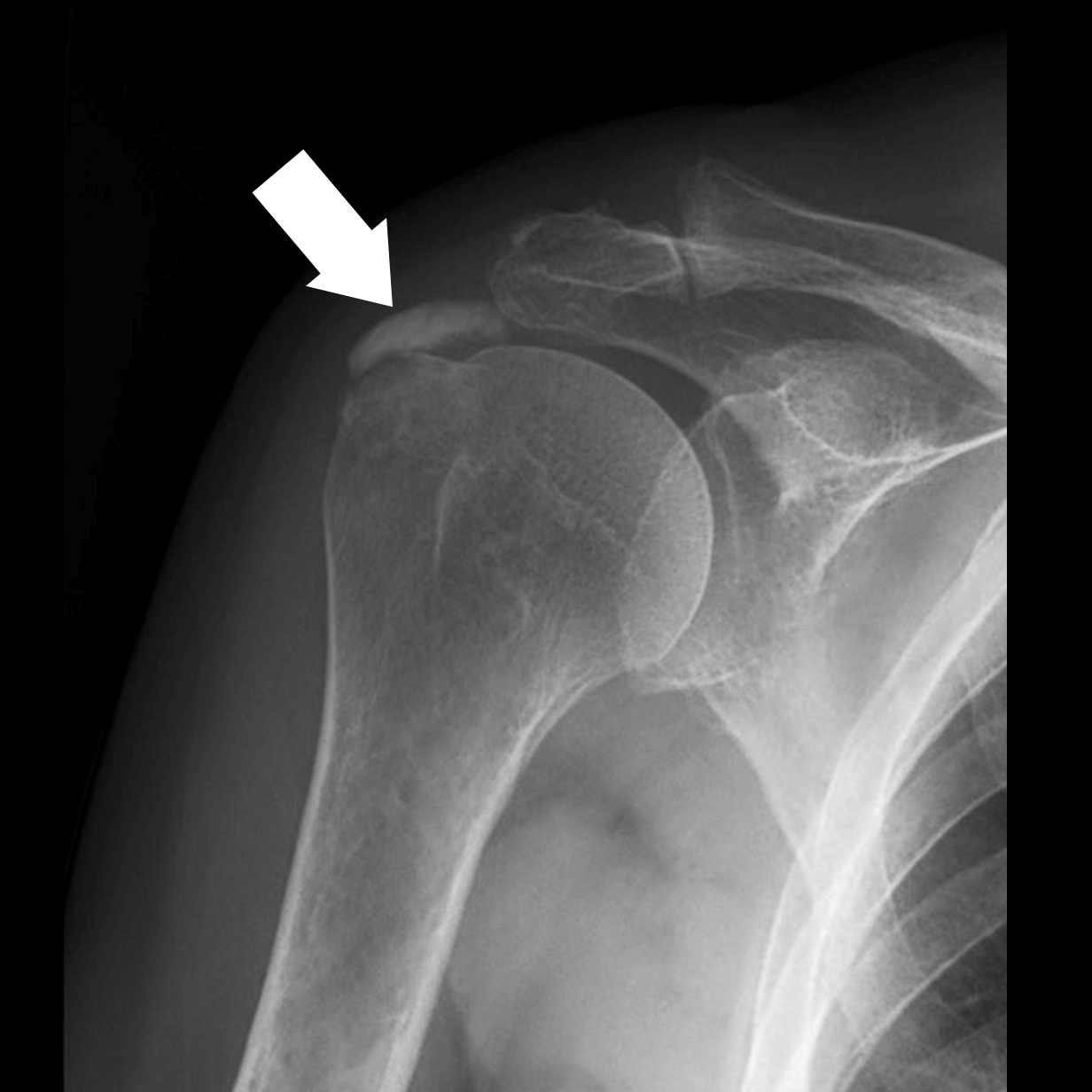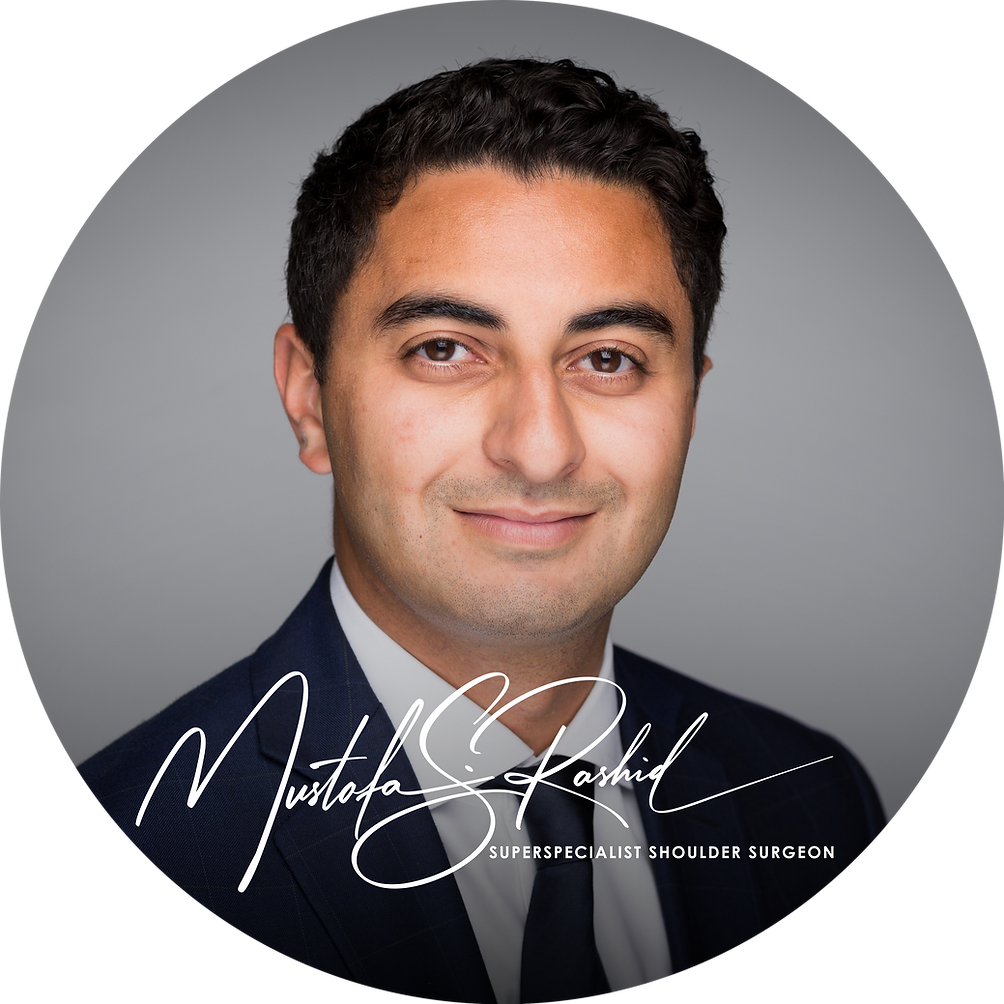Calcific Tendonitis

Anatomy and Function
Calcium deposits around the shoulder are usually found embedded within the rotator cuff tendons. The rotator cuff is made up of 4 muscles and their tendons, that attach around the ball of the shoulder joint, forming a cuff.
We do not know the true cause of why some people deposit calcium into their tendons, but we do know that it is very common.
Causes and Risk Factors
Around 17 out of 100 people will have calcium deposits within their rotator cuff tendons. Of those that do, 1 in 3 will develop pain. The pain is thought to be related to inflammation in and around the tendon
Symptoms
Most people have no symptoms from arthritis of the AC joint. Those that develop symptoms, typically describe pain. Unlike other causes of shoulder pain, AC joint pain is usually very specifically localised over the AC joint. The ACJ joint sits right under the skin and in women, it sits just under and next to where your bra strap typically would sit. Rarely, patients with AC joint arthritis may feel clicking or clunking sensations. Pain and clicking are usually worse on activity, typically when the arm is brought across the chest.
Diagnosis
The diagnosis of AC joint arthritis is often made on X-rays however, this can be misleading as nearly all patients over aged 35 year will have signs of AC joint arthritis on X-rays. That does not always mean the cause of your pain is coming from the AC joint. If you choose to consult with Dr. Rashid, he will ask you questions that will help identify whether your AC joint is contributing to your shoulder pain. The diagnosis is usually confirmed with clinical examination of the shoulder where Dr. Rashid will identify specific signs that your AC joint may be responsible for your shoulder pain.
Non-Surgical Treatment Options
Unlike arthritis in other joints in the body, AC joint arthritis is rather unusual. As mentioned, most people over a certain age have x-ray features of AC joint arthritis, so why do they not have any symptoms? We do not know exactly, but it is thought that arthritis in this joint often burns itself out and becomes painless over time. In patients that have not improved and continue to suffer with pain, a targeted steroid injection, given under ultrasound guidance into the ACJ is often enough to remove the pain. In combination with physiotherapy to strengthen the shoulder, most patients can avoid any surgery. Dr. Rashid prefers a targeted injection into the AC joint because there are clinical studies that have shown that experts often miss the joint when performing the injection without guidance (ultrasound or x-ray)
Surgical Treatment Options
Surgery to relieve pain from AC joint arthritis may be performed in patients whose symptoms are refractory to conservative treatment. Surgery is performed using a keyhole camera and a day surgery procedure. The joint space is widened by burring away 5-10mm of the bone from the collarbone to make more space. This allows full movement of the shoulder without pain. Patients go home the same day with a sling to use for 1 week. The pain usually go aways within a few weeks and full return to function is achieved soon after.
Self-Management and Lifestyle Tips
Anti-inflammatory painkillers may help manage the pain for short periods until it settles. Certain movements of the shoulder can aggravate the symptoms of an arthritic AC joint. Patients who regularly lift weights in the gym may choose to adapt their workouts temporarily to avoid excessive loading of the joint. Flat bench press with dumbbells or a barbell and overhead shoulder press can put significant load on the ACJ. Adapting your workouts to aim for higher rep ranges with lower weight may be a good way to manage your symptoms.
About the Author

Mustafa Rashid
Dr. Mustafa Rashid is an award-winning, well published superspecialised surgeon from the UK, specialising in shoulders
